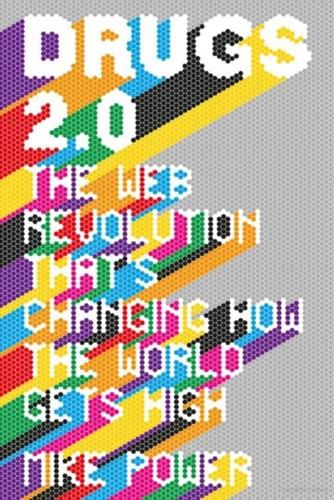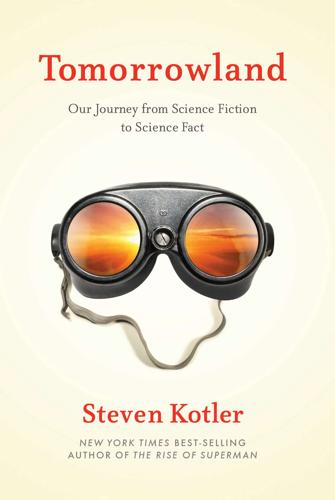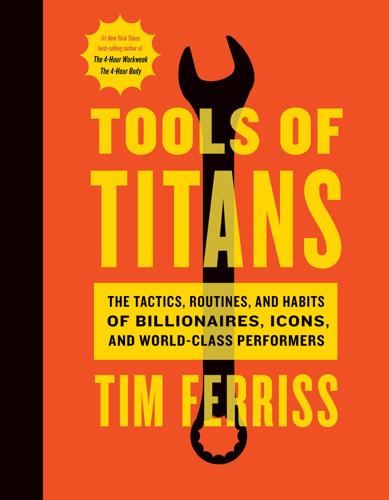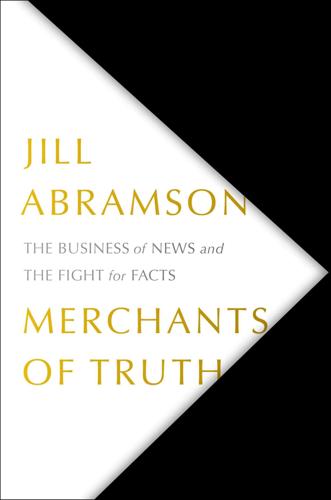
Drugs 2.0: The Web Revolution That's Changing How the World Gets High
by
Mike Power
Published 1 May 2013
These laws were made five decades before the creation of an entirely new drug whose effect on users would be different from that of LSD, but equally profound. This drug would leak into the global water table on a scale that would have given even the most extreme LSD evangelist pause for thought. One individual, allied with technology, would be a central figure in this new race between chemists, users, the culture and the law: American Alexander Shulgin, the world’s most prolific and genius-tinged psychedelic chemist, the godfather of Ecstasy. Notes 1. C. F. Gorman, ‘Excavations at Spirit Cave, North Thailand: Some Interim Interpretations’, Asian Perspectives, Vol. 13, 1970, pp. 79–108 2. www.antiquecannabisbook.com/chap2B/China/Pen-Tsao.htm 3. www.shipman-inquiry.org.uk/4r_page.asp?
…
Its grounds are strewn with cacti and fringed with greenhouses; the front door is rickety, its hinges rusted now. This is the unlikely epicentre of a global drugs culture. The products that have emerged from it, the methodology that produced these new compounds and the career of its owner make it, indisputably, the world’s most storied and influential drug lab. For much of the last century Alexander Shulgin worked in relative obscurity. But in the mid-to-late 1980s, a new drug, MDMA, later known as Ecstasy, started appearing on the streets of the USA and Europe. This substance, a stimulant that prompted emotional openness, would change the world’s drug habits for ever, bringing the psychedelic experience to millions who, before its advent, would perhaps never have considered using drugs.
…
Freudenmann, Florian Öxler and Sabine Bernschneider-Reif, ‘The Origin of MDMA (Ecstasy) Revisited: The True Story Reconstructed from the Original Documents’, Addiction, Vol. 101, Issue 9, pp. 1241–1245; http://onlinelibrary.wiley.com/doi/10.1111/ j.1360-0443.2006.01511.x/abstract 3. www.nytimes.com/2005/01/30/magazine/ 30ECSTASY. html?_r=1 4. Julian Palacios, Syd Barrett and Pink Floyd: Dark Globe (Plexus Publishing Ltd, 2010), p. 298 5. Dennis Romero, ‘Sasha Shulgin, Psychedelic Chemist’, Los Angeles Times, 5 September 1995 6. Alexander Shulgin, PIHKAL: A Chemical Love Story (Transform Press, 1991), p. 860 7. Ibid., p. xvi 8. Ibid., p. xviii 9. www.erowid.org/library/books_online/tihkal/ shulgin_rating_scale.shtml 10. Shulgin, PIHKAL, pp. 876–877 11. Ibid., p. 733; see also www.erowid.org/library/books_online/ PIHKAL109.shtml 12. www.maps.org/media/kleiman040204.html 13.

Stealing Fire: How Silicon Valley, the Navy SEALs, and Maverick Scientists Are Revolutionizing the Way We Live and Work
by
Steven Kotler
and
Jamie Wheal
Published 21 Feb 2017
But pharmacology—and specifically, the branch of pharmacology that deals with psychoactive compounds—changes the rules of the game. It gives us access to more substances than ever before, and this provides us with more diverse data to consider. And perhaps no one played a bigger role in rewriting those rules than renegade chemist Alexander Shulgin. The Johnny Appleseed of Psychedelics Alexander Shulgin was called many names over the course of his career. Wired dubbed him “Professor X,”11 while the New York Times preferred “Dr. Ecstasy.”12 As he was a tall man with a shock of white hair and a thick beard, “Gandalf” was not uncommon13 More formally, Shulgin has been described as “a genius biochemist,” a “pioneering psychopharmacologist,” and, according to the Drug Enforcement Administration (DEA), a “dangerous criminal.”
…
In Prohibition America: Michael Pollan, The Botany of Desire (New York: Random House, 2001), p. 9. 11. Wired dubbed him “Professor X”: Ethan Brown, “Professor X,” Wired, September 1, 2002. 12. the New York Times preferred “Dr. Ecstasy”: Drake Bennett, “Dr. Ecstasy,” New York Times, January 30, 2005. 13. “Gandalf” was not uncommon: Brian Vastag, “Chemist Alexander Shulgin, Popularizer of the Drug Ecstasy, Dies at 88,” Washington Post, June 3, 2014. 14. Sasha Shulgin was born in Berkeley: For a great introduction to Shulgin’s life, see the recent documentary Dirty Pictures, by Etienne Sauret, 2010. 15. “I learned there were worlds inside of me”: James Oroc, “The Second Psychedelic Revolution Part Two: Alexander ‘Sasha’ Shulgin, The Psychedelic Godfather,” Reality Sandwich, 2014, http://realitysandwich.com/217250/second-psychedelic-revolution-part-two/. 16.
…
“I learned there were worlds inside of me”: James Oroc, “The Second Psychedelic Revolution Part Two: Alexander ‘Sasha’ Shulgin, The Psychedelic Godfather,” Reality Sandwich, 2014, http://realitysandwich.com/217250/second-psychedelic-revolution-part-two/. 16. Sasha’s interest,” explains Johns Hopkins: Ibid. 17. The Shulgin Rating Scale: See https://en.wikipedia.org/wiki/Shulgin_Rating_Scale. 18. At 22 milligrams: Alexander Shulgin and Ann Shulgin, PiHKAL: A Chemical Love Story (Berkeley, CA: Transform Press, 1991), p. 560. 19. Richard Meyers, a spokesperson for the DEA: Bennett, ”Dr. Ecstasy.” 20. Everybody knows who the Shulgins: Teafaire, “No Retirement Plan for Wizards,” teafaire.org, February 28, 2013, http://teafaerie.org/2013/02/456/. 21.

This Is Your Country on Drugs: The Secret History of Getting High in America
by
Ryan Grim
Published 7 Jul 2009
Pickard has always been a controversial figure in the acid underground, but widely respected by his peers and adversaries alike as a talented chemist. “He’s one of the few we know of who has ever synthesized mescaline,” Nichols told me, referring to a process that’s far too difficult and expensive to be profitable. One of the few others known to have accomplished the feat is Alexander Shulgin. “Pickard is a charlatan,” blotter artist, blotter-art collector, and unofficial Family spokesperson Mark McCloud told me. He and many others warned me not to take anything that Pickard said at face value. Within the several Families, Pickard is known as someone who can’t be trusted, and for good reason: facing decades in prison following a 1988 conviction for running an LSD lab, he cooperated and had his sentence drastically reduced, according to news reports from the time.
…
“I haven’t been a teenager for a number of years,” said Kent, by way of explaining that Erowid is most useful when somebody comes into the ER under the influence of a drug she hasn’t heard of. The Erowids were even invited to speak at a national toxicology conference in 2006. According to Kent, they “were very well received.” Schedule I—drugs that the DEA considers to be the most dangerous and have the least medical value—is something of a tribute to Alexander Shulgin. A former Dow Chemical Company chemist, Shulgin, now in his eighties, is a legend in the psychedelic world, having synthesized MDMA in the fifties after stumbling across a discarded recipe. He went on to invent the overwhelming majority of Schedule I drugs, making him the godfather of all research chemicals.
…
Nadelman, Ethan NAFTA (North American Free Trade Agreement) NarcoNews.com Narcotic Addict Rehabilitation Act Nation National Center on Addiction and Substance Abuse National Drug Threat Assessment (DOJ) National Geographic National Household Survey on Drug Use and Health National Institute on Drug Abuse (NIDA) National Institutes of Health National Organization for the Reform of Marijuana Laws (NORML) National Survey on Drug Use and Health Nature’s Medicinal Nebraska neurotransmitters Neville, Richard Newcomb, Michael New Yorker New York Times on Alexander Shulgin on codependency movement on heroin trade on Luciano on medical marijuana on Miami cocaine trade on opium on Prohibition on speed Webb and New York Times-CBS News Nicaragua. See Contras Nichols, Carl Nixon, Richard M. Norodin North Dakota Northwestern University No Speed Limit: The Highs and Lows of Meth (Owen) novocaine Oakland, California.

Tomorrowland: Our Journey From Science Fiction to Science Fact
by
Steven Kotler
Published 11 May 2015
And this is why that second meeting between Allan and Marilyn was more difficult than the first — because that was the meeting they discussed risk. The drug Allan’s considering for the first session is MDMA, known on the street as Ecstasy, and a latecomer to the psychedelic tool kit. First discovered by Merck in 1912, MDMA didn’t hit the therapeutic world until the middle 1970s when pharmacologist Alexander Shulgin, then teaching at the University of California, San Francisco, heard from his students that it helped one of them get over a stutter. Shulgin dosed himself, reporting “altered states of consciousness with emotional and sexual overtones.” He also noticed the drug “opened people up, both to other people and to inner thoughts,” and decided its primary benefit was mental.

How to Be Idle
by
Tom Hodgkinson
Published 1 Jan 2004
This steadiness allows long periods of dancing and the experience of going into a trance; repetitive behaviour is encouraged, we are in the moment, there is no planning and no memory, just a simple joy of being. This is, or was, the attraction of ecstasy, and to someone like me, who had considered that at 22 it was time to ' get real ' , knuckle down, have a career, the exhilaration brought by ecstasy, music and dancing all night was deeply liberating. This is how the radical chemist Alexander Shulgin describes the feeling: I feel absolutely clean inside, and there is nothing but pure euphoria. I have never felt so great, or believed this to be possible. The cleanliness, clarity, and marvelous feeling of solid inner strength continued throughout the rest of the day, and evening, and through the next day.

Truths, Half Truths and Little White Lies
by
Nick Frost
Published 7 Oct 2015
Ravers I love you. Jimi Hendrix. Hunter S Thompson. Jim Jarmusch. Woody Allen. Mulder and Scully. Steven Spielberg. John Williams. The Simpsons. George Lucas. Roy Neary. Indiana Jones. The Young Ones. Bill Nighy. Martin Amis. The Smiths. The Bluetones. Shit pubs. Sunny Side Up! Aleksander Solzhenitsyn. Alexander Shulgin. Timothy Leary. Milan Kundera. West Ham Utd. Close Encounters of the Third Kind. Falafel. McDonalds. Meat Fruit. Good curries. Global knives. Non-stick pans and decent ovens. Onions. TV. AHL forever! Table of Contents About the Author Title Page Imprint Page Dedication Contents Introduction Part One Part Two Part Three Part Four You have been watching . . .

Trick Mirror: Reflections on Self-Delusion
by
Jia Tolentino
Published 5 Aug 2019
In the fifties, the Army Chemical Corps tested it on animals. In the sixties, a related substance called MDA gained popularity as “the love drug.” During the seventies, a number of scientists—including Leo Zeff, the one who named the drug Adam—tried the drug, and a network of practitioners of underground MDMA psychotherapy began to grow. In 1978, Alexander Shulgin and David Nichols published the first human study on ecstasy, noting the substance’s possible therapeutic effects. The attainment of chemical ecstasy—empathogenesis—occurs in stages. The drug first places the attention on the self, stripping away the user’s inhibitions. Second, it prompts the user to recognize and value the emotional states of others.

Drunk: How We Sipped, Danced, and Stumbled Our Way to Civilization
by
Edward Slingerland
Published 31 May 2021
It is too often the case that listening to accounts of other people’s trips is as tedious and unhelpful as hearing about what they dreamt last night (or reading a twenty-page treatise on how Truth Is the Color Blue). But there are some first-person accounts that manage to convey, as much as the pale medium of words can manage, something of the magic of a psychedelic experience. Alexander Shulgin, a pioneer in the research of synthetic psychoactive drugs, gives this account of his experience on 120 mg of pure MDMA: I felt that I wanted to go back, but I knew there was no turning back. Then the fear started to leave me, and I could try taking little baby steps, like taking first steps after being reborn.

Tools of Titans: The Tactics, Routines, and Habits of Billionaires, Icons, and World-Class Performers
by
Timothy Ferriss
Published 6 Dec 2016
Heinlein), The Singularity Is Near (Ray Kurzweil), Atlas Shrugged (Ayn Rand), Stone Soup story DiNunzio, Tracy: Good to Great: Why Some Companies Make the Leap . . . and Others Don’t (Jim Collins), The Everything Store: Jeff Bezos and the Age of Amazon (Brad Stone) Dubner, Stephen: For adults: Levels of the Game (John McPhee); for kids: The Empty Pot (Demi) Eisen, Jonathan: National Geographic Field Guide to the Birds of North America (Jon L. Dunn and Jonathan Alderfer) Engle, Dan: Mating in Captivity: Unlocking Erotic Intelligence (Esther Perel), The Cosmic Serpent (Jeremy Narby), Autobiography of a Yogi (Paramahansa Yogananda) Fadiman, James: Pihkal: A Chemical Love Story; Tihkal: The Continuation (Alexander Shulgin and Ann Shulgin) Favreau, Jon: The Writer’s Journey (Christopher Vogler and Michele Montez), It Would Be So Nice If You Weren’t Here (Charles Grodin), The 4-Hour Body (Tim Ferriss), The Hobbit (J.R.R. Tolkien), Kitchen Confidential (Anthony Bourdain) Foxx, Jamie: Without Sanctuary: Lynching Photography in America (James Allen) Fussell, Chris: Gates of Fire (Steven Pressfield), Steve Jobs; The Innovators (Walter Isaacson) Fussman, Cal: One Hundred Years of Solitude (Gabriel García Márquez), Between the World and Me (Ta-Nehisi Coates), Speak Like Churchill, Stand Like Lincoln: 21 Powerful Secrets of History’s Greatest Speakers (James C.

Merchants of Truth: The Business of News and the Fight for Facts
by
Jill Abramson
Published 5 Feb 2019
The two built little clapboard rooms, Jack & Jill style, in their shared loft, and as the Times noted in a profile that ran in the Sunday Styles section, they displayed the spoils from their globe-trotting exploits with Vice; Morris had cacti he’d been given by the widow of his personal idol, Dr. Alexander Shulgin, the earliest promoter of the drug Ecstasy in the science world. Photographs of psilocybin mushrooms hung on the walls. On the nightstand in Morton’s bedroom he kept the skull of an Amazonian crocodile adorned with toucan feathers, the skull of a vole, and a rubber fetus. Morton was fighting the leptospirosis he’d picked up in Venezuela, but he happily regaled the Times reporter with stories about minding the Gross Jar.